1) The place where you can experience:
(Ise Grand Shrine as the Top of All Shrines in Japan):
Ise Grand Shrine is located in Ise city of Mie prefecture and recognized as the universal tutelary god and the top of all 80 thousand number of shrines in Japan. There are 125 numbers of shrines not only Naiku(Inner shrine of Ise Shrine) and Geku(Outer shrine of Ide Shrine) but also associated shrines, auxiliary shrines, subordinate shrines and jurisdiction shrines.
Ise Grand Shrine had been the place where all Japanese people wanted to visit one in their whole life during Edo period (1602-1868).

The mythology of Japanese Gods had been written on “Nihon Shoki” which is the oldest history book in Japan.
According to this “Nihon Shoki”, two gods named Izanami-no-Mikoto and Izanagi-no-Mikoto were the wife and husband who had created islands in Japan at the first time and Susano-no-Mikoto was the son of them who created actual country on earthly world in Japan.
It is said that Izumo area was the first land Susano-no-Mikoto had stepped foot on from the heavens. That is why Izumo is said to be the hometown of Gods. Ookuninushi-no-Mikoto who was the son of Susano-no-Mikoto had executed nation building in Japan by Izumo as the basement.
After a while, the messenger from the heavens had come to meet with Ookuninushi-no-Mikoto and demanded him to descend the land. The meeting had been held in “Inasa-no-Hama” beach and finally Ookuninushi-no-Mikoto had agreed to transfer the land in Japan to the descendant of Amaterasu-Oomikami.
Amaterasu-Oomikami has been enshrined in Ise Jingu shrine by Emperor Suijin who was the tenth emperor in Japan.
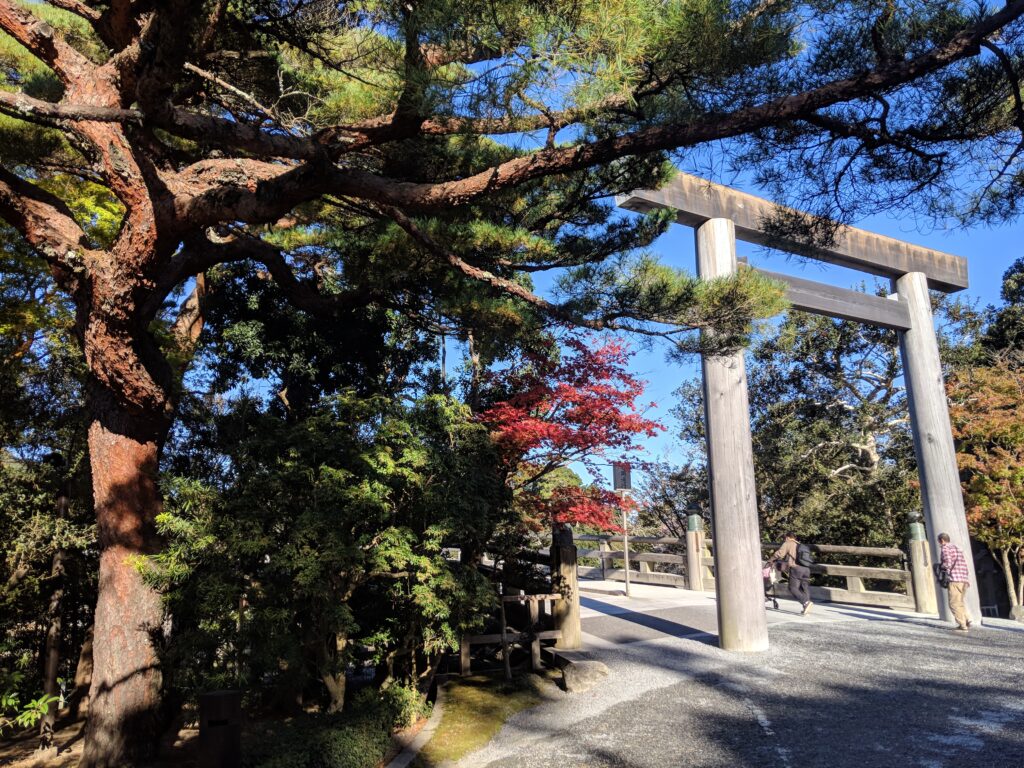
There are several arguments if these historical descriptions of deities are true or not, however, thanks to this mythology of Gods, Japan has kept Imperial Household of same family on more than 1400 years without be killed or ruined by any Samurai worriers who had dominated Japan and lots of traditional festivals of Shinto related such as Nachi-Fire Festival have been kept up to now.
Regular shrine removal named “Shikinen-sengu” has been executed once 20 years from about 1300 years ago by which special shrines are re-built, all the costumes and ceremonial implements are changed to new ones.
(a) Naiku(Inner shrine of Ise Shrine) :
Naiku(Inner shrine of Ise Shrine) is located in the riverside of Isuzu-river whose water come from Mt.Kamiji. According to “Nihon-shoki”, it is described that during the period of the 11nd emperor Suijin, the best place to defy “Amaterasu-Oomikami” had been searched and finally, found this place about 2000 years ago.
Ujibashi-bridge:
Ujibashi-bridge is constructed over Isuzu-river whose length is 100meter and made by Cypress. Two big Torii with 7meter height are standing at both the foot of this bridge.
You can see the divine landscape of morning sun rising from the center of a big Torii standing in front of Ujibashi-bridge during the winter solstice.

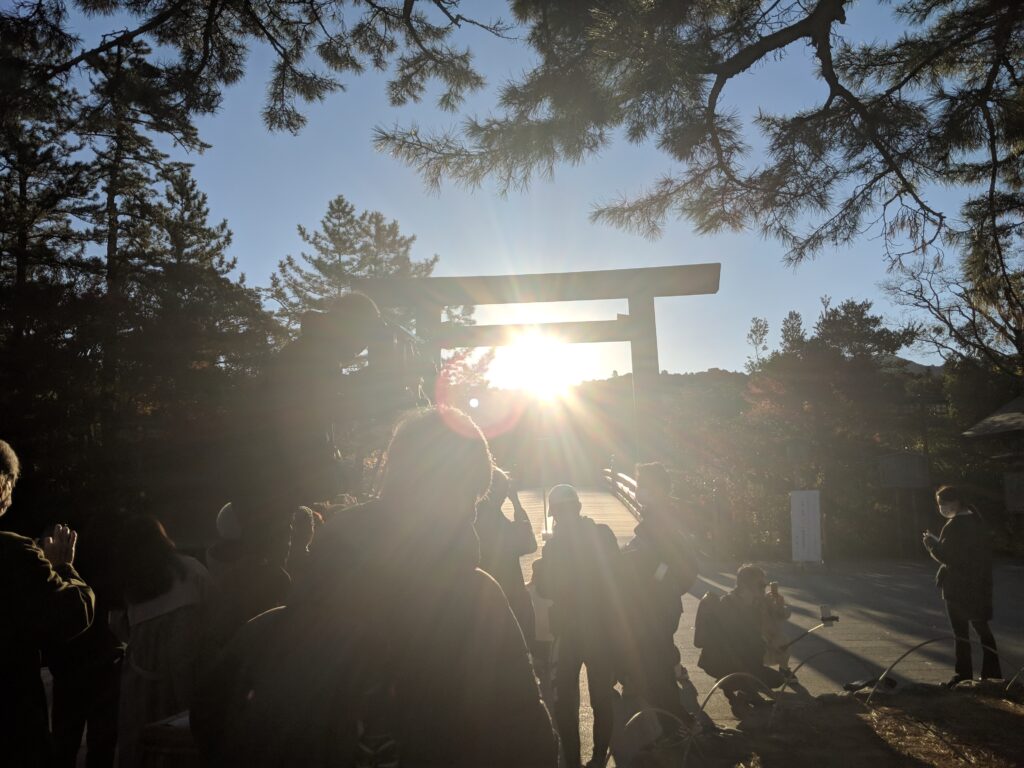

Ujibashi-bridge and surroundings:

Upper side of Isuzu river landscape seen from Ujibashi-bridge:

The wide approach laid by white gravel:

Mitarashiba:
Mitarashiba is located in the riverside of Isuzu-river by walking to a moderate down slope made by stone matts from the approach road. This used to be a place for people to purify before worshipping at Shoden shrine.
Autumn color leaves and green trees are reflected on the surface of the river whose landscape have people felt overwhelmed.

Shogu shrine:
Shogu shrine where the god named “Amaterasu-Oomikami”” enshrined is located on the top of 30 stone steps and protected by fivehold wooden walls named “Itagaki-Minamigomon, Sototamagaki, Uchitamagaki, bangaki and Mizugaki from the outside.
People can worship in front of the second wall named “Sototamagaki”.
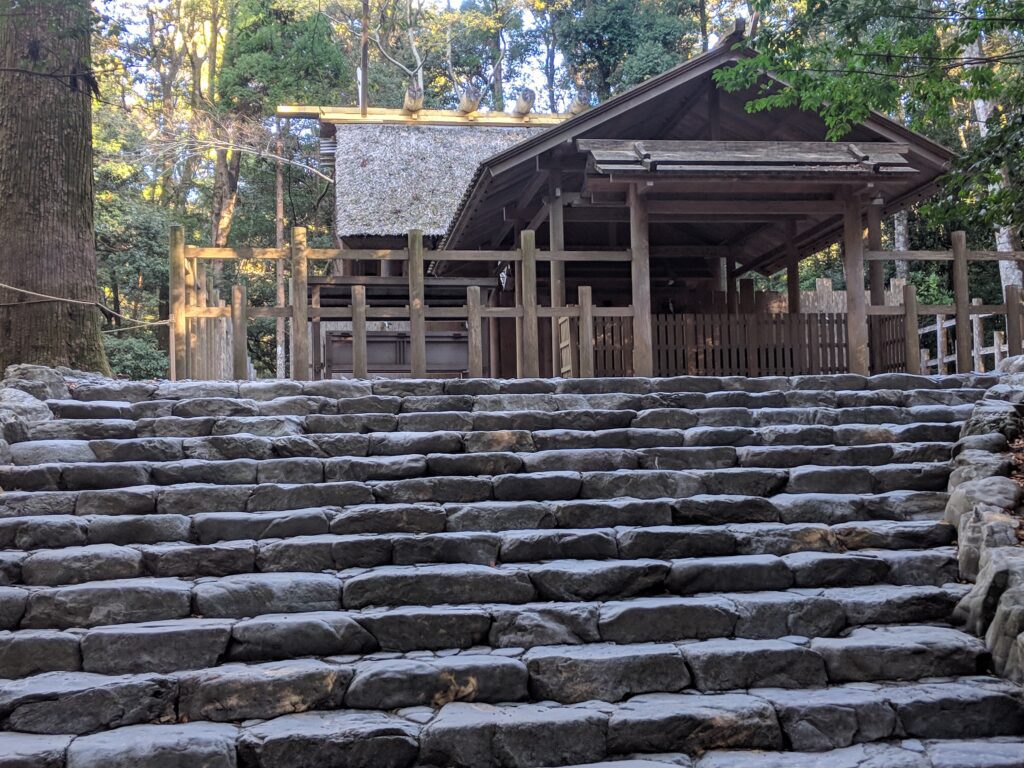
Aramatsurigu:
Aramatsurigu deify Aramitama of “Amaterasu-oomikami” as a god who acts malevolently and the highest status within all associated shrines of Naigu.

Kazahinominomiya:
Kazahinominomiya deify two gods who control wind and rain.
It is said that these two gods raised divine wind to protect Japan during the Mongol invasion in Kamakura period (1192 – 1333).

Kanraden hall :
Kanraden hall whose architecture style is “Irimoya-Tuskuri” building with a hip-and-gable roof can serve you an amulet.

Tsukiyomino-miya :
Tsukiyomino-miya is located in outside from Naigu and deify a god named “Tsukiyomino-Mikoto” who was the younger brother of “Amaterasu-Oomikami” and his Aramitama as a god who acts malevolently.

(b) Geku(Outer shrine of Ide Shrine):
Geku(Outer shrine of Ide Shrine) is located in the center of Ise city where there are not only Geku(Outer shrine of Ide Shrine) but also three associated shrines and ten of auxiliary shrines, subordinate shrines and jurisdiction shrines.
Geku(Outer shrine of Ide Shrine) deify the god named “Toyouke Oomikami” who serve the meals for Amaterasu-Oomikami and considered as the god of food, clothing and shelter.
Magatama pond and Sengu hall :
Magatama pond and Sengu hall where the history of Ise grand shrine, construction explanation of shrines and so-on are exhibited.

Hiyokebashi bridge:
Hiyokebashi is the small bridge constructed over Isuzu river and this is the starting place to worship Ise grand shrine. After you walk through this bridge, you can enter the god precincts.

Temizusha:

The approach toward Shogu shrine:
The approach is laid by gravels and both side of it are planted by big cedars that let us feel as if we are walking through a forest. We go forward Shogu shrine after walking through two Torii.

Shogu shrine:
Shogu shrine where the god named “Toyouke-Ookami” enshrined is protected by quadruplex wooden walls named “Itagaki, Sototamagaki, Uchitamagaki and Mizugaki from the outside.
People can worship in front of the second wall named “Sototamagaki”.



Taganomiya shrine:
Taganomiya shrine is an associated shrine where Aramitama as a god who acts malevolently is deified.

Tsuchinimiya shrine:
Tsuchinimiya shrine deify a god of landlord who protects the land area of Geku.

Kazenomiya shrine:
Kazenomiya shrine deify two gods who control wind and rain.
It is said that these two gods raised divine wind to protect Japan during the Mongol invasion in Kamakura period (1192 – 1333).

Kanraden hall:
Kanraden hall is located in the junction between the front-side approach and back-side one whose architecture style is “Irimoya-Tuskuri” building with a hip-and-gable roof. You can receive an amulet.
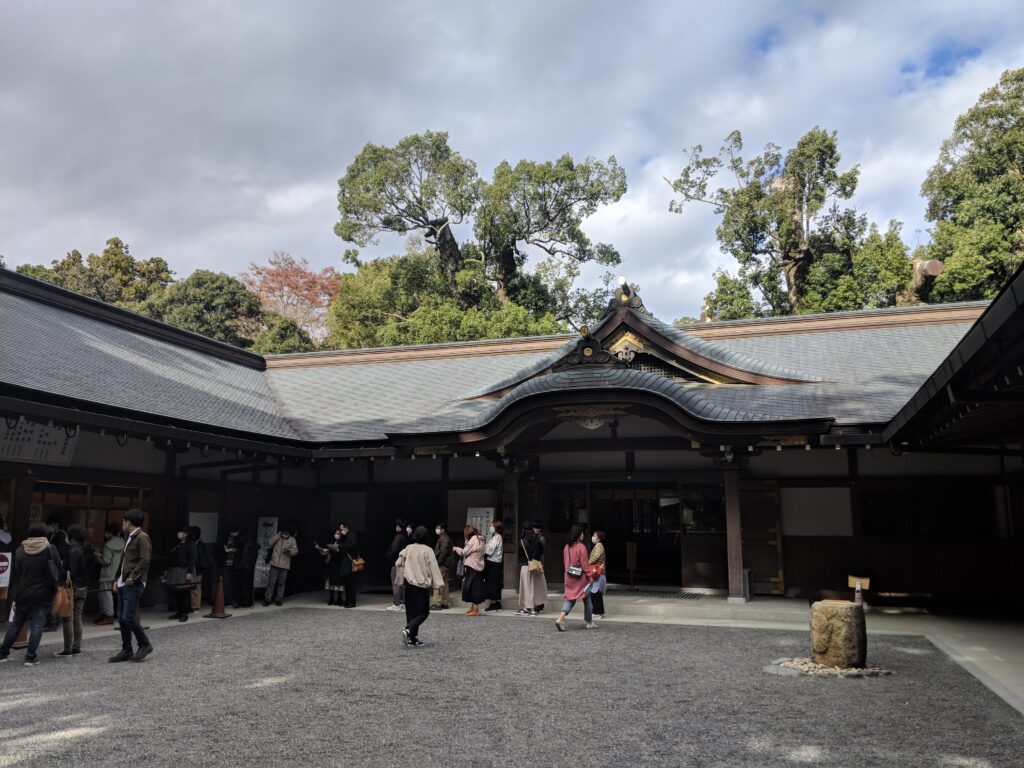
Tsukiyomino-miya:
Tsukiyomino-miya is located in outside from Gaigu and deify a god named “Tsukiyomino-Mikoto” who was the younger brother of “Amaterasu-Oomikami” and his Aramitama as a god who acts malevolently.

2) The place where you can enjoy:
(Surroundings of Ise Grand shrine where lots of delicious gourmets are gathered.):
There are various kinds of restaurants lined up in the surroundings of Ise Grand shrine, such as Matsusaka beef, Seafood and so-on.
You can taste them in lunch restaurants for Matsusaka beef, Seafood and so-on and also in best kept secret lunch spots for B-class gourmet.



Japan Van prepares various tour itineraries for you to enjoy the view in Japan.
The minimum itinerary days is more than 5 days.
Contents of our service: We can arrange a car and a National Government Licensed Guide Interpreter for your trip.
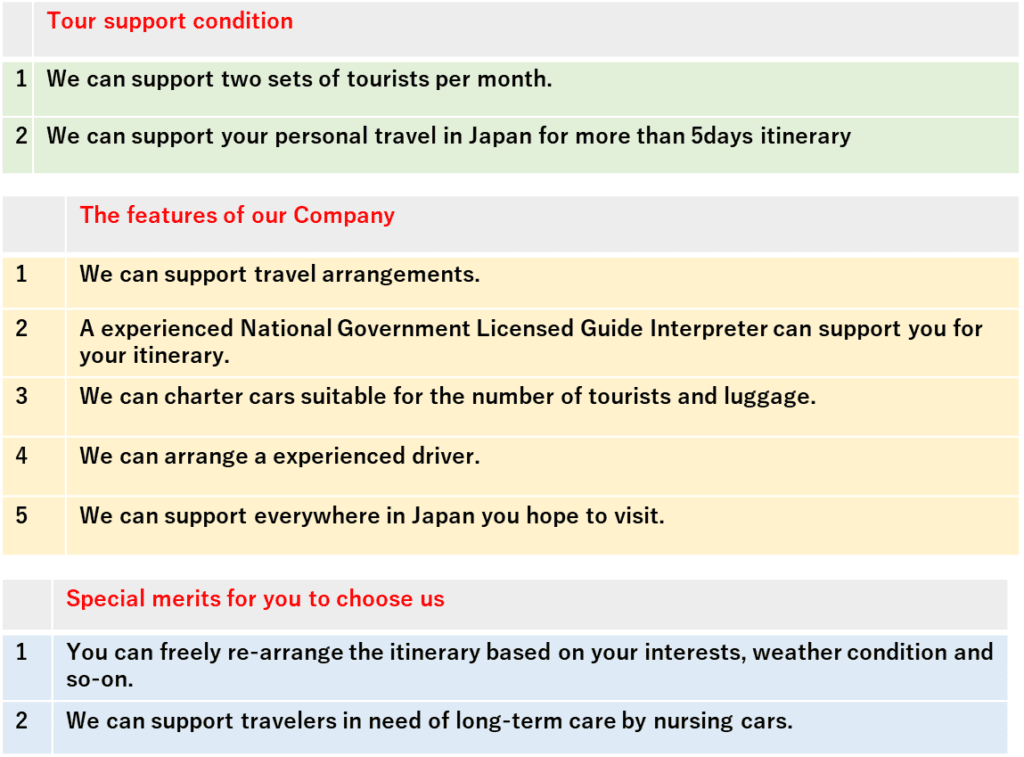
| Car charter and a guide condition | |
| 1 | Number of tourists: 2pax – 12pax |
| 2 | Charter time and guide condition: 12 hours (including 4 hours resting time) |
